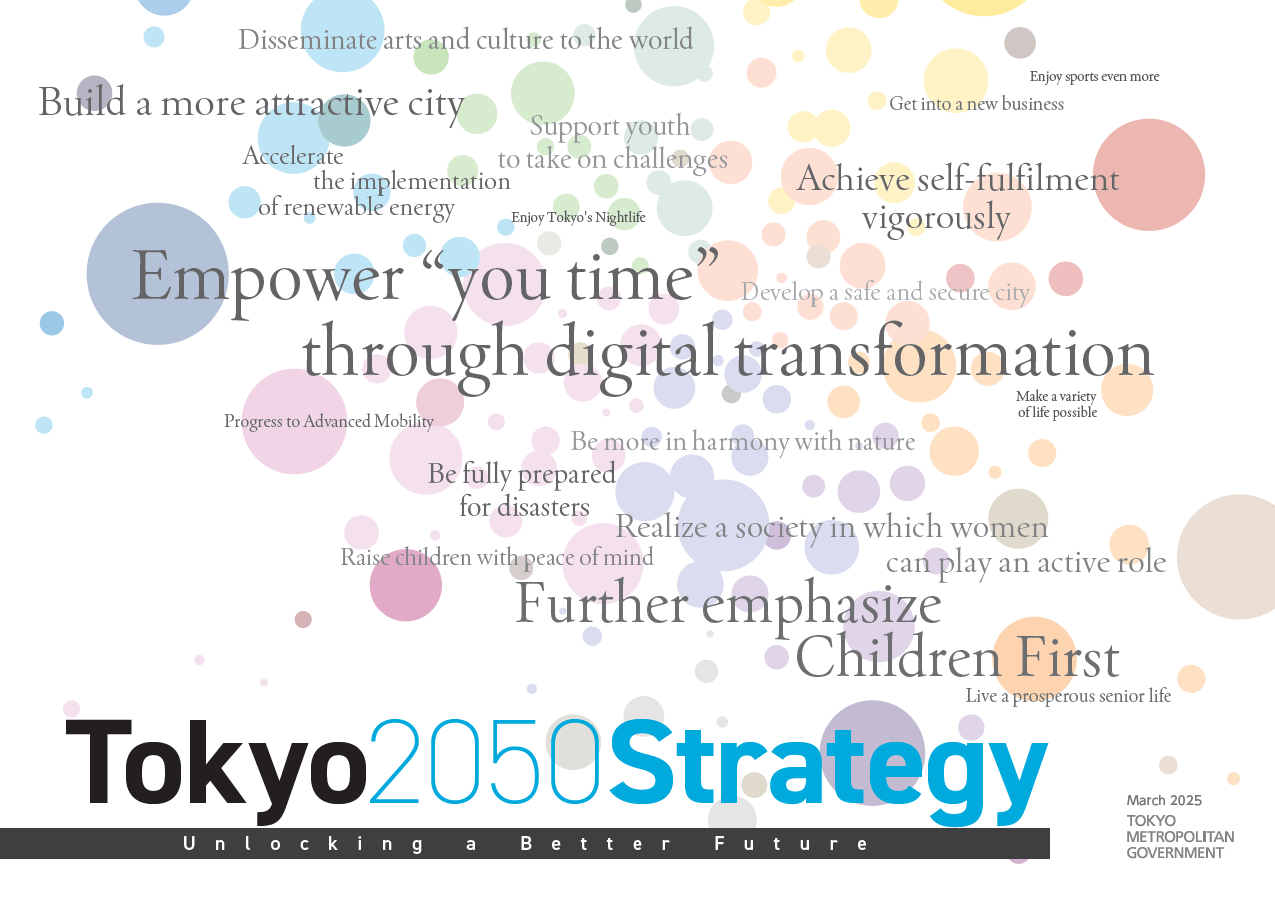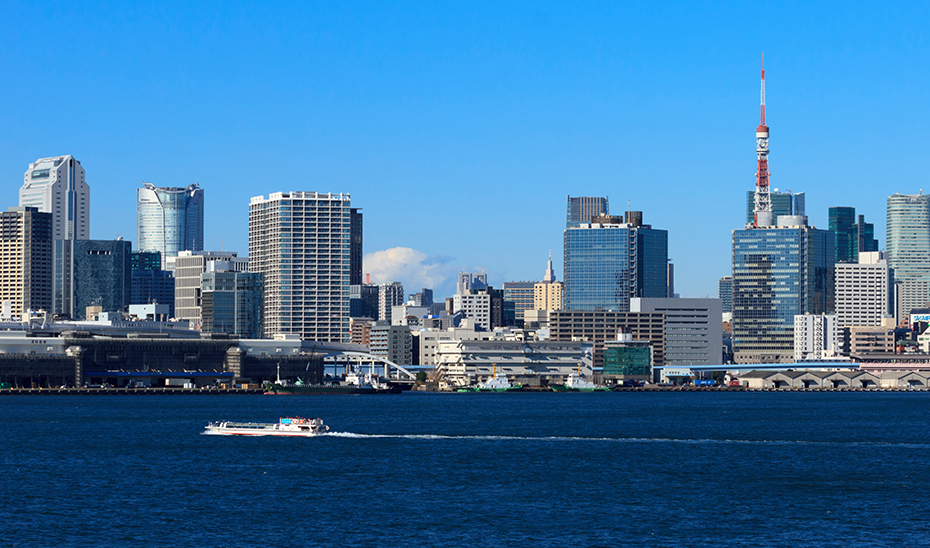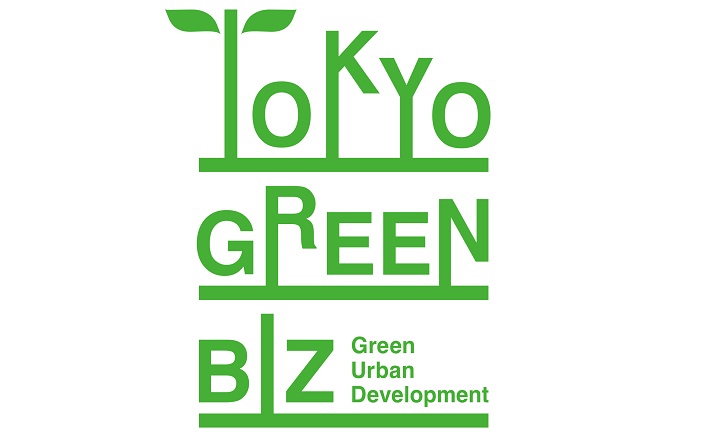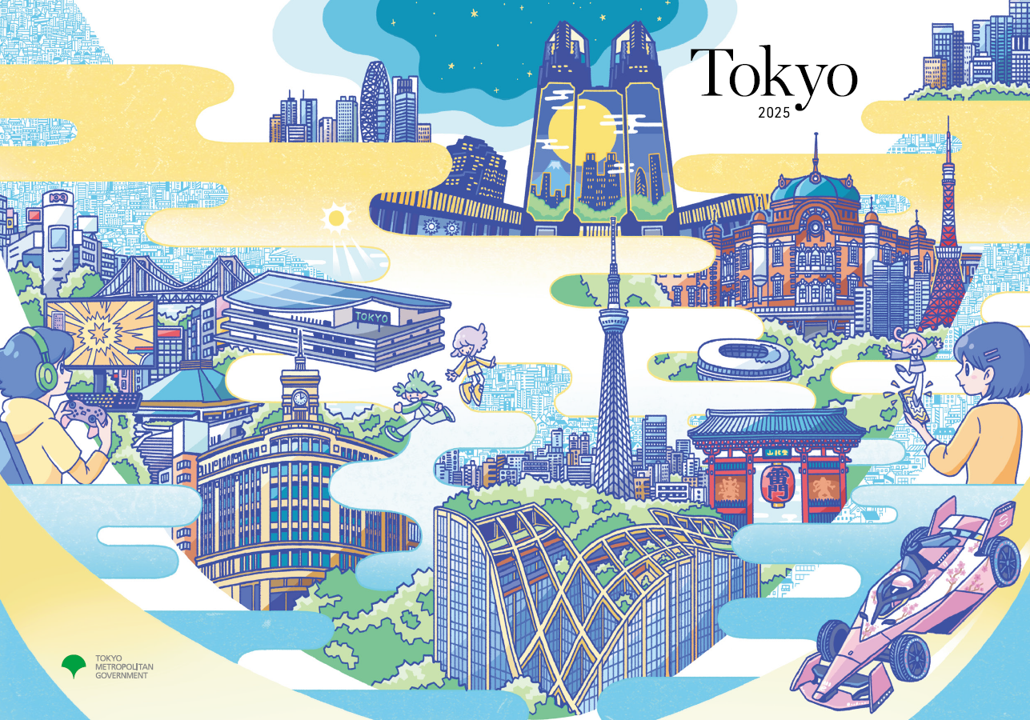Digital Twin: A New Solution for Urban Challenges in Tokyo
Introduction
Tokyo is facing a range of challenges in its rapidly changing urban environment, including a declining birthrate and aging population, shifts in the flow of people and goods, the crisis of climate change, and the need to prepare for a potential major earthquake directly beneath the capital. To address these issues, the Tokyo Metropolitan Government (TMG) is advancing the use of digital twin technology.
What is a Digital Twin?
A digital twin is a virtual reproduction of various elements of the physical world—such as infrastructure like buildings and roads, economic activities, and patterns of human movement—created in cyberspace (a virtual space on computers and networks) using data collected from sensors and other sources. It functions as a “twin” of the real world.
The Benefits of Digital Twin Technology
1) Real-Time Data Collection Linked to the Physical World
Advanced sensor and communication technologies enable the real-time collection of diverse data from the physical environment.
2) Analysis and Simulation Using 3D Space
Rather than relying solely on flat maps, advanced analysis and simulation can be conducted within a three-dimensional space that replicates the real world and functions as a testbed-like environment.
3) Feedback to the Physical World
By feeding simulation results back into the physical world in real time, the data can be used to support decision-making and system control.
By applying various technologies to Tokyo’s administration, the TMG aims to enhance the Quality of Service (QoS) in public services and improve the Quality of Life (QoL) for its residents.
Data featured in the Digital Twin 3D Viewer
The TMG’s 3D viewer integrates a wide range of data sources. It provides detailed 3D digital maps of urban structures—such as buildings, roads, and sidewalks—across Tokyo. Point cloud data obtained through laser surveying offers highly precise information about terrain and buildings, helping to better understand Tokyo’s urban landscape. Additionally, the project aggregates location data for facilities such as parks, schools, and medical institutions, as well as real-time data on city buses, river flow rates, and traffic volume. Overlaying different types of data enables a multifaceted understanding of urban conditions.
Use Cases of the Digital Twin
Real-time data
1) Checking Real-Time River Data
By combining data such as river water levels, estimated inundation areas, surveillance camera feeds, and evacuation site information, users can identify appropriate evacuation locations in advance, helping ensure safer and more effective evacuation during a disaster.
Click the picture above to access the 3D viewer.
2) Checking Real-Time Location Data of Toei Buses(City Bus)
In addition to route and bus stop data, real-time bus location information—updated every 20 seconds—allows users to track the current position of Toei buses.
Click the picture above to access the 3D viewer.
Visualization of Damage Assessment
To support recovery efforts following the Noto Peninsula Earthquake that struck Ishikawa Prefecture on January 1, 2024, the TMG has published damage assessment data—such as slope collapses, surface cracks, and 3D point cloud data showing the extent of damage—on its Digital Twin 3D Viewer. This data visualizes the extent of damage, including coastal uplift and conditions in urban areas, allowing for detailed comparisons between pre- and post-disaster states. The information is being used to aid Ishikawa Prefecture’s recovery and disaster prevention efforts, and the insights gained will also be applied to enhance Tokyo’s own disaster preparedness.
Point Cloud Visualization: Pre- and Post- Disaster Comparison
Left: Before Disaster|Right: After Disaster
Click the picture above to access the 3D viewer.
Bureau of Digital Services
Bureau of Digital Services
Email:S1100501(at)section.metro.tokyo.jp
*The above e-mail address has been arranged as an anti-spam measure. Please replace (at) with @.









Recommended for You
Lost Item Return Rate Triples: Tokyo Startup Envisions a World Where Nothing Stays Lost
October 17, 2025
Smart Tokyo Implementation Strategy
September 18, 2025
Tokyo 2025 Deaflympics (Part 2): Overcoming Limited Public Awareness
November 12, 2025
Toward a Zero Emission Island: Renewable Energy on the Ogasawara Islands
September 26, 2025
Pioneering the Future of Tokyo's Startup Ecosystem Through Finance and Technology
September 24, 2025
From Edo to AI: Safeguarding Tokyo's Waterfront Against the Sea
November 5, 2025
Tokyo Embassy Talk: Zambia and Japan Building a Symbiotic Partnership
October 10, 2025
Inspecting Next-Generation Mobility Systems
October 7, 2025
A New Era of Marketing, Pioneered by Generative AI
September 29, 2025
Tokyo: The Perfect City for Students and Researchers
September 19, 2025